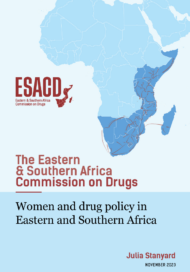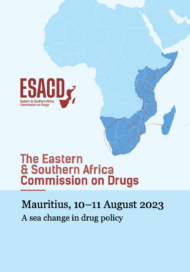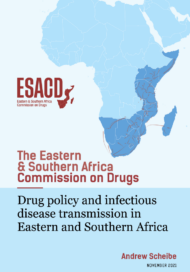Posted on 27 Nov 2023
Gender equality is recognized as a fundamental human right and is enshrined in international frameworks such as the UN’s Sustainable Development Goals and international treaties such as the Convention on the Elimination of All Forms of Discrimination against Women (CEDAW) of 1979. In pursuit of this goal, there have been campaigns in recent decades to incorporate a ‘gender lens’ – to understand and address gender inequalities – across different policy areas. Drug policy is no exception: provisions to mainstream gender considerations have begun to form part of policy frameworks globally and regionally, including in Eastern and Southern Africa.
This background paper reviews the available evidence on how women’s experiences differ from men’s in terms of their participation in drug economies (as users, suppliers and members of communities heavily affected by drug markets) and how gender shapes their experiences of drug policy, including policing, prisons, health and social care. It aims to situate Eastern and Southern Africa within global trends.
Broadly speaking, women’s experiences in drug markets and of drug policy may differ from men’s for many of the same reasons that gender inequality persists in other spheres of life. These include gender discrimination and patriarchal ideologies that marginalize women, a lack of economic empowerment, victimization through gender-based violence, and the fact that women are more likely to be carers for children and other dependent family members, which places them under additional economic and social stress. In a context where drug use and possession for personal use are widely criminalized and people who use drugs (PWUD) are stigmatized and forced to the fringes of society, gender as a social structure plays an integral role in women’s pathways to drug use and addiction.
Many of the same patriarchal norms that shape women’s experience also shape those of LGBTQ+ (lesbian, gay, bisexual, transgender, queer and other minority) communities. This paper also reviews the evidence on how drug policy treats (and often mistreats) these communities in Eastern and Southern Africa.
Finally, this paper explains how a lack of gender-disaggregated data on drug markets and the impact of drug policies can often render women’s experiences invisible, meaning that information that could be revealing about how women experience drug markets is lost. This can frustrate attempts to develop evidence-based drug policy.




